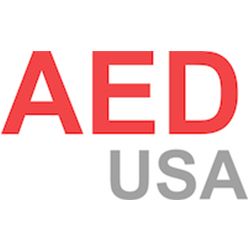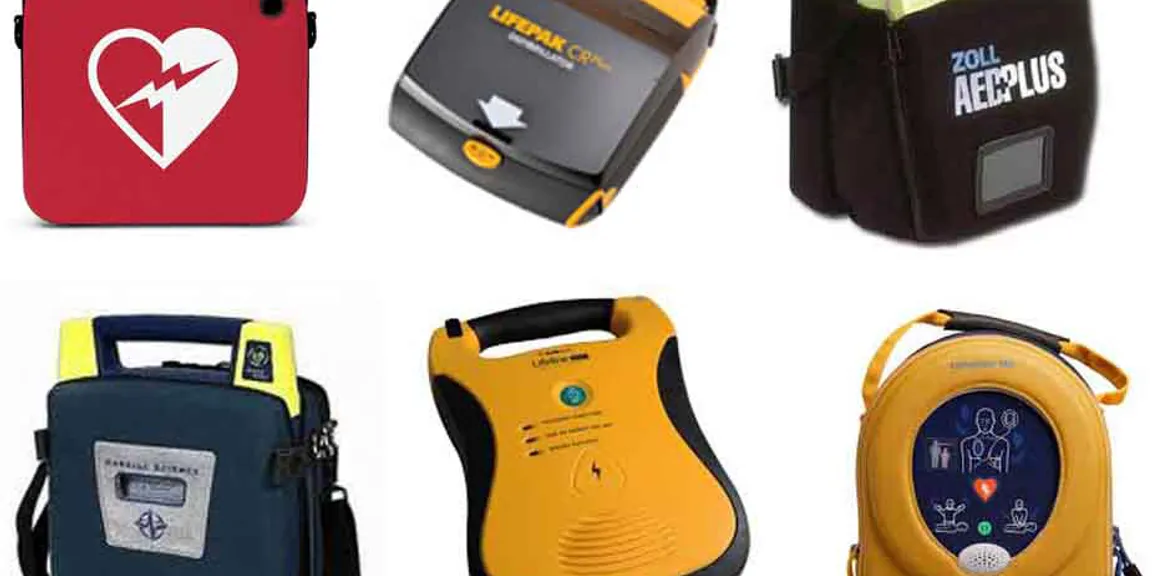

Important Factors You Need to Consider When Choosing an AED
CPR and AED before emergency responders arrive can save lives. Given the reliability of AED in saving lives, it is important to learn the factors to consider in choosing an AED. Here are some of them:
What is an AED? Automated External Defibrillator or AED is a small medical device used in emergency situations to analyze the Sudden Cardiac Arrest (SCA) victim’s heart rhythm and, if necessary, to deliver electrical shocks to the chest of the victim to restart the beating or to re-establish an effective rhythm of the heart.

Why is AED Vital in Emergency Responses
According to the American Heart Association (AHA), there are estimated 360,000 incidents of out-of-hospital cardiac arrests in 2018 in the US alone and 90% of them are fatal. An immediate CPR and the availability of an AED can mean life or death to the person experiencing SCA. The survival rate of SCA victims administered with CPR with no use of AED before emergency responders arrive is estimated to be just 9%. Whilst, the survival rates for victims administered with CPR and AED is way higher at 38%.
Given the reliability of AED in saving lives, it is important to learn the factors to consider in choosing an AED. What are those?
Functionalities
Functionalities refer to the features that a certain kind of AED offers. These features or functionalities may vary from one AED to another. For instance, the features offered by Heartsine Defibrillator may be different from those offered by Cardiac Science AED or by other AED brands.
These functionalities typically include but not limited to the practice facility, the ease of use, the number of steps you need to go through before delivering the shock, the power it uses and, most importantly, it’s efficacy. Some AEDs are manual and some are savvier with graphic guides or audio guides to deliver better shocks. Some also have practice modules which can help users in becoming more at ease when using this vital device. With practice modules, the users regardless of whether they have completed a first aid CPR AED training or not can be able to practice and learn how to better use the device and how to become more efficient and effective especially when emergencies strike.

Cost
Before finally deciding what to choose, try to also consider the other costs that you will incur when using the AED, and do not just focus on the initial cost. Compare purchase prices first and then consider the maintenance costs. Some AEDs may be cheap but their replaceable parts and AED accessories like the pads may be expensive.
For instance, consider how many Cardiac Science AED battery does it need to function properly, is the battery rechargeable or not, how often should you replace the pads to make it effective, and how much are these AED pads? Think of the maintenance costs including the supplies. Consider how long before the pads expire and whether the AED consume much battery power.
Also, take into account the warranty period for the device. How long is the warranty period? Does the manufacturer offer free check-ups and servicing within the warranty period? Know the coverage of the warranties. Remember to read the warranty card!
Also, consider if the company who sells the AED offers free training on device use. Free training especially when coupled with CPR training is very helpful and you might save on training fees if your AED is for office use only and your staffs are required to have training. Otherwise, training isn’t really absolutely necessary especially if the device comes with clear manuals.
User Manuals
Make sure to purchase AEDs with manuals so even if there is no training provided, anyone who has access to the device can learn how to use it. Some AEDs are so advanced with visual and audio guides while in use.
Manuals that come with illustrations are good, too, for easier interpretation and faster administration in cases when shocks to the chest are needed ASAP. The survival rate of the SCA victim drops by 10% every minute that an AED or defibrillator is not used.

The User
Also, consider your target user when choosing an AED. If it is for home use, check if the device is user-friendly and does not include complicated steps. Ask if it is possible for the members of your household to use it and administer shock even without proper training. Is the information in the manual or the guides easy to understand?
If it is to be used by professionals, consider the professionals’ requirements before canvassing. For professional use, you may need an AED that also has manual defibrillation and an ECG display.
Maintenance
It is important to know what kind of maintenance the AED requires to keep it in good running condition. Ask your supplier where is their service centers or if they do have any. It is much easier if there are service centers nearby so you can quickly ask for assistance. The experts from the service centers can assist you in checking your device and they can also teach you how to do the regular maintenance of the device. Read the manufacturer’s policy to ascertain what needs to be checked on a regular basis.
CPR and AED before emergency responders arrive can save lives. If you use an Automated External Defibrillator (AED) within a few minutes, you can DOUBLE or TRIPLE the victim’s chances of survival. What’s more important is that anyone can use AED even without training and it is easy to use with clear manuals. It is easy enough that even a child can use it. And most importantly, it can be used at home, at the offices or even in public places.



